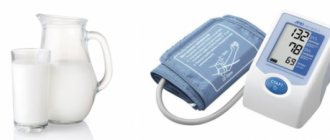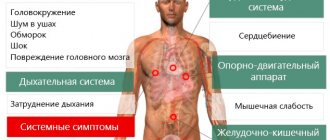The multifactorial effect of smoking on blood pressure has both immediate and delayed effects. A rapid rise in blood pressure after smoking is associated with the direct effect of nicotine on blood vessels and their regulation: by providing an n-cholinomimetic effect (that is, irritating the corresponding receptors), nicotine causes a reflex constriction of blood vessels, and after the spasm, blood pressure increases.
The second aspect of nicotine’s effect on blood pressure is its stimulation of the release of adrenaline through the sympathetic nervous system.
The delayed effect in the form of chronic arterial hypertension is associated with a violation of vascular regulation due to the formation of a pathological chain “nicotine - blood vessels - pressure” with a corresponding vascular response. The cause of hypertension in smokers also lies in respiratory and circulatory disorders that are inevitable when smoking.
In this case, there is chronic activation of chemoreceptors, and through them the excitation of the sympathetic nervous system with subsequent reactions of the nervous, vascular, and endocrine systems.
Does your blood pressure go up or down when you smoke?
Scientists are trying to study in detail the changes that occur in a smoker's blood pressure. Experts cannot come to a consensus and unanimously decide whether the indicator from cigarettes increases or decreases.
Recent studies have shown that there are changes in blood pressure. It is necessary to understand what effect smoking has on blood pressure and pulse, and how the body behaves when a person smokes cigarettes.
Video taken from the channel: CARDIOGRAF - all about the health of your heart and blood vessels
The heart is an organ that circulates blood throughout the body through arteries, vessels and veins. Blood pressure is directly related to the functioning of the cardiovascular system and is the ratio of the upper and lower indicators. Where the upper parameter shows the load on the heart when the heart muscle contracts, and the lower parameter when it relaxes.
Normal blood pressure ranges from 110 to 130, and from 70 to 80.
Many people are interested in knowing whether smokers have high or low blood pressure. People who consistently smoke more than two cigarettes a day have high blood pressure or hypertension. Both indicators increase by 10-20 mm. Hg Art.
Hypotension or low levels are less common in smokers, this is due to how the body reacts to tobacco smoke. Usually, when tightened, the vessels begin to narrow, which impedes the process of blood circulation. The heart muscle begins to contract repeatedly, making additional movements, resulting in an increase.
More information about wear and tear of blood vessels and the consequences of smoking
A smoker has a significantly increased risk of developing heart and vascular diseases if he or she has the following characteristics:
- Heredity: if family members suffer from low or high blood pressure;
- Diabetes;
- Kidney failure;
- Overweight, obesity;
- Sedentary lifestyle;
- Age over 35 years.
Smoking has the most adverse effect on the nerve receptors in the arterial walls: they regulate the level of pressure in the system, if necessary, increase or decrease it to maintain homeostasis (optimal state).
Their functions are suppressed by nicotine, and with an increase in the level of adrenaline in the blood, these receptors are unable to regulate and normalize blood pressure.
Cigarettes also significantly increase the cholesterol level in the blood and lead to its excess. It sticks to the walls of blood vessels, creating plaques:
- Reducing the lumen of the vessel, reducing the volume of passing blood;
- Leading to the occurrence of blood clots, blood clots;
- Not allowing oxygen and nutrients to be delivered to internal organs, including the brain, heart, etc.
This effect forces the heart to work more actively, speed up blood flow in order to prevent oxygen and nutritional starvation of the body. All this leads to hypertension and increased blood pressure.
A gradual increase in the size and number of atherosclerotic plaques in a smoker can lead to various complications, including death:
- There is a risk of plaque rupture and hemorrhage.
- High blood pressure from smoking, coupled with other factors, can lead to a hypertensive crisis, requiring immediate hospitalization and inpatient treatment.
- Long-term smoking and chronic blood pressure disorders lead to severe heart disease and angina.
- Heavy smoking among young men can cause impotence.
Is it possible to smoke with high blood pressure?
Hypertension is a common symptom characterized by a sharp increase in blood pressure. Subsequently, rare hypertension turns into a chronic form, which is called hypertension . Such changes in indicators are typical not only for older people, but also for young people.
Cigarettes can actually raise blood pressure, since they contain nicotine, which promotes the release of kidney hormones into the blood, namely adrenaline and norepinephrine.
Video taken from the channel: Alcohol Stop
As a result, the heart begins to work more actively, creating additional stress on the blood vessels. It is worth considering that one cigarette contains more than 196 toxic compounds. When inhaled, they enter the bloodstream along with tobacco smoke and contribute to vasospasm. It is for this reason that doctors do not recommend smoking with high blood pressure.
Before smoking, you need to lower your blood pressure so as not to provoke complications. The effects of smoking on high blood pressure usually include:
- Angina pectoris;
- Stroke;
- Heart attack;
- Arrhythmia;
- Thrombosis;
- The appearance of edema;
- Coronary heart disease.
It is worth noting that smoking can increase blood pressure only if a person is predisposed to hypertension or has smoked a large number of cigarettes per day. It is also recommended to give up coffee on an empty stomach, since together with cigarettes, the drink can cause an increase in blood pressure .
How does tobacco smoke affect the heart and blood vessels?
To understand why smoking leads to pressure surges, you need to understand what exactly happens when cigarette smoke enters the body.
- After inhaling and penetrating cigarette smoke into the lungs, harmful substances enter the bloodstream: after 7-8 seconds they end up in the brain, and circulate throughout the body in less than half a minute.
- Nicotine in the blood activates the increased work of individual organs: the brain begins to produce dopamine, which creates a feeling of pleasure; The adrenal glands lead to the release of adrenaline into the blood, accelerating the contraction of the heart - this is what increases blood pressure.
- Harmful substances have a destructive effect on the body: ammonia and formaldehyde compounds, which can cause various inflammations, lead to activation of the immune system; carbon monoxide interferes with the flow of oxygen to internal organs, which also increases heart rate and, as a result, increases blood pressure; the body tries to prevent the entry of harmful compounds from cigarette smoke - it spasms the blood vessels, reducing the lumen. This leads to a redistribution of blood flow, accumulations and thinning of the walls of arteries, vessels and capillaries.
The brain, having felt the effects of dopamine, begins to depend on smoking: after some time, it again requires a dose of nicotine to obtain pleasure. Over and over again, the processes described above are repeated, which gradually consumes the body’s resources. Ultimately, this can lead to rupture of the vessel, hemorrhage, stroke or heart attack.
Is it possible to smoke with low blood pressure?
Hypotension is less common in smokers than hypertension. The fact that smoking can lower blood pressure . A similar effect occurs after prolonged smoking for several years. During this time, the vessels lose elasticity and plasticity, which creates optimal conditions for low blood pressure.
Symptoms of hypotension include:
- dizziness;
- blurred vision;
- fatigue;
- sensitivity to light, noise;
- absentmindedness;
- pallor.
Smoking causes blood pressure to drop extremely rarely; the root cause of hypotension lies in disruptions in the functioning of other organs.
It should be borne in mind that if the pulse is increased during hypotension, then smoking should be stopped for a while until the indicators return to normal. The heartbeat becomes more intense, which affects your well-being. The stomach begins to hurt, including the urge to vomit or nausea.
Hypotension can occur with thyroid diseases. Be sure to consult with a specialist to identify the exact reason for the decrease in performance.
Smoking lowers blood pressure
Nicotine can also lower blood pressure - there are also many predisposing factors to this. Many of them are associated not only with the influence of nicotine, but also with the conditions that it causes when it enters the body. For example, the arrhythmogenic effect of nicotine is associated with hypotension and a vascular response in response to a drop in blood pressure.
An increase in the release of norepinephrine under the influence of nicotine is also important: norepinephrine affects α2 receptors, the stimulation of which leads to a decrease in blood pressure.
Hypotensive patients are characterized by daytime sleepiness, prolongation of night sleep, a tendency to fainting or pre-fainting, and weather sensitivity. They are weak and broken in the morning (in hypotensive smokers, morning coughing attacks lead to severe dizziness, “green” in the eyes, palpitations and sweat).
Pale skin, constantly cold nose, ears, feet and hands, memory impairment, decreased motor and mental activity, exercise intolerance, motion sickness when traveling, mild nausea - for example, just when thinking about upcoming trouble.
When inhaling, smokers suffering from arterial hypotension may experience severe dizziness, a feeling of slowing down of everything that is happening, a desire to sit or lie down, and a headache in the forehead, above the eyes. The inhaled air seems cold, sounds are muffled, sensitivity to smell, color, and taste disappears or sharply decreases.
What to do?
There are no special measures to help a hypotensive smoker. It is recommended to adjust your diet (exclude fatty and overly sweet foods) and physical activity, get enough sleep, and take vitamin and mineral complexes on the advice of your doctor.
It is better to smoke in the fresh air, away from other smokers, it is advisable to sit while smoking, and if blood pressure drops too sharply, immediately sit down and put your head on your knees.
For many people, drinking a cigarette and coffee at the same time helps - only it has a too “lethal” effect on the blood vessels.
Smoking with intracranial and intraocular pressure
Intracranial pressure due to smoking rarely appears; a bad habit only helps to detect and identify this feature of the body. Typically, ICP signals failures in other systems, such as the cardiovascular system.
Symptoms include:
- Acute headache;
- A sharp deterioration in vision;
- Dizziness;
- Dark circles under the eyes;
- Vomit;
- Fatigue.
Often, increased ICP is a sign of an aneurysm in the brain. This disease is a thinning of the walls of the artery, as a result of which, with increased ICP, the artery can burst and hemorrhage occurs.
Smoking helps
reduce vascular density , including in the brain.
If this disease is detected, a person is advised to stop smoking for a while so as not to provoke a stroke. Increased intraocular pressure may be accompanied by the presence of glaucoma . The disease can be congenital or acquired, with bad habits being only secondary factors.
When diagnosing glaucoma, it is advisable to reduce the number of cigarettes to reduce the risk of vision deterioration. With excessive use of tobacco products, intraocular pressure will increase due to poor outflow of intraocular fluid through the vessels, as a result of which the disease will progress.
If glaucoma is detected, you must register with an ophthalmologist or ophthalmologist, that is, vision specialists. Doctors will prescribe treatment and monitor changes in the development of the disease.
What should a smoker do to normalize blood pressure?
It must be said right away: smoking leads to an increase or decrease in blood pressure in all people, regardless of their characteristics. This does not happen immediately, but with each new cigarette; As negative effects accumulate, they multiply and lead to serious health problems.
There is no simple and clear answer to the question of when smoking will lead to hypertension - it depends on many factors and characteristics of a particular person: a smoker with strong health is able to resist nicotine for many years, but a sick or weak person cannot resist the effects of nicotine for a long time.
For those who want to normalize blood pressure and internal balance, there is only one way out - quit smoking. Cigarettes and health are antipodes that cannot be connected in any way.
Currently, there are many alternative methods of smoking, and new methods have appeared:
- E-Sigs;
- Hookah;
- A tube;
- Cigar, etc.
But they all raise or lower blood pressure. For example, many young people are switching to e-cigarettes, believing that they will save them from nicotine addiction and the negative impact on their health. But this is a misconception: vaping liquids, which are inhaled by a person when using an electronic cigarette, contain a percentage of nicotine. Moreover, liquids are sold in which the concentration of nicotine is very high, and it is nicotine that has a destructive effect on human health and blood pressure.
It should also be said about passive smoking, inhaling tobacco smoke near a smoker. This poses a great risk to people's health, especially those who have problems with blood pressure.
In what cases does nicotine reduce blood pressure?
In a number of situations, paradoxical reactions of the body to smoke are revealed, in which instead of the usual increase in blood pressure, a decrease is observed.
This phenomenon occurs when:
Malfunctions of the nervous system.- Hormonal and enzymatic disorders.
- Paradoxical type of reaction to tobacco ingredients.
A decrease in indicators can occur against the background of acute complications caused by smoking. For example, in a non-smoking person, several puffs can cause severe intoxication, manifested by a fainting state, a collapse reaction, in which blood pressure drops sharply.
Awareness of all the negative consequences of smoking, and especially the question of whether nicotine increases blood pressure, forces many thinking people to make the right decision and get rid of the pathological habit.
Make an appointment
Very often, patients find out about their arterial hypertension by accident, during a medical examination or simply out of curiosity by “measuring” their blood pressure while visiting a “hypertensive” patient... Often, nothing bothers such people, not even a headache. And this is the danger, because without feeling an increase in blood pressure, it is impossible to “spread a straw” - to protect yourself from terrible complications: stroke and myocardial infarction. Therefore, every self-respecting person who cares about his health, his performance and the well-being of loved ones should periodically measure his blood pressure. If you don’t yet know your blood pressure “numbers,” then the information in this article is for you. If you are “hypertensive,” then perhaps this information will help you live a full life.
Arterial hypertension is generally considered to be an increase in resting blood pressure in the brachial artery of 140/90 mmHg. Art. and higher. Blood pressure can also increase in healthy people during periods of intense physical activity or psycho-emotional stress (stress). Most often, such a compensatory increase in blood pressure is proportional to the increase in heart rate.
rules for measuring blood pressure should be followed to ensure that the result is as reliable as possible:
- Avoid drinking coffee and strong tea for 1 hour before measurement;
- do not smoke for 30 minutes before measurement;
- discontinue nasal and eye drops for this period;
- measure blood pressure at rest, after a 5-minute rest, while sitting; if the measurement procedure was preceded by significant physical or emotional stress, the rest period should be extended to 15–30 minutes;
- You can use an automatic or semi-automatic tonometer, with a cuff placed on the shoulder (devices with the cuff placed on the wrist show less reliable results than traditional ones);
- The tonometer needle must be at the zero mark before starting the measurement;
- the tonometer cuff should be at the level of the heart, approximately at the level of the 4th intercostal space, its lower edge 2 cm above the elbow;
The technique for measuring blood pressure is as follows: place the phonendoscope membrane in the elbow area, inflate the air in the cuff to 20 mm Hg. Art. above the vanishing point of the pulse, then reduce the pressure in the cuff using the valve by approximately 2 mmHg. Art. per second, note the pressure value at which the first sound appears - this corresponds to systolic (“upper”) blood pressure. The pressure value at which the sounds (pulse) disappear corresponds to diastolic (“lower”) blood pressure.
If, however, your blood pressure turns out to be elevated, you should consult a doctor. Often arterial hypertension accompanies certain diseases (kidneys, thyroid glands, endocrine organs, etc.), and is only their symptom. Treatment of the underlying disease, in this case, will help fight hypertension. However, most often arterial hypertension is hereditary in nature, and is therefore called hypertension. Ask your relatives if there were any “hypertensive patients” in the family, or cases of death from stroke or heart attack? Be sure to tell your doctor about this.
What symptoms should alert you to hypertension?
First of all, it is a headache, localized mainly in the occipital region, dizziness, decreased performance, “flickering spots” before the eyes. Long-term arterial hypertension adversely affects human organs, primarily the heart, brain and kidneys. If you have had arterial hypertension for many years and at high blood pressure levels you feel well, the risk of cardiovascular complications (stroke and myocardial infarction) is still unusually high!
A severe manifestation of arterial hypertension is a hypertensive crisis.
A hypertensive crisis is a sharp rise in blood pressure. There are two types of crisis. The first type is manifested by a sharp headache, redness of the skin, palpitations, trembling, chills; the second – nausea, vomiting, visual disturbances, convulsions, drowsiness. A hypertensive crisis is dangerous due to serious complications. At high blood pressure, ruptures of small arteries of the brain can occur (hemorrhagic cerebral stroke develops), or a sharp narrowing of the blood vessels of the heart (myocardial infarction develops) or brain (ischemic cerebral stroke develops). Therefore, at the first signs of a hypertensive crisis, it is necessary to take actions to lower blood pressure recommended by your attending physician and call an ambulance.
Provoking factors for a sharp increase in blood pressure, and sometimes a crisis, can be:
- neuropsychic or physical overload;
- weather changes, magnetic storms;
- heavy smoking;
- abrupt withdrawal of certain medications that lower blood pressure;
- large meals, especially salty ones at night;
- consumption of food and drinks containing substances that increase blood pressure (alcohol, coffee, chocolate, cheese, caviar).
There are several known predisposing factors that contribute to the development of arterial hypertension. Fighting them can help lower blood pressure and reduce the dose of medications, which you will agree is beneficial, given the prices of medications in our country. So what are these factors?
The first factor is excess salt consumption ! Even if it seems to you that you are consuming a small amount of salt, remove the salt shaker from the table, try not to add salt to your food, limit saltiness, and especially smoked foods. The amount of table salt consumed should not exceed 1 teaspoon per day. Just one reduction in salt in the diet can reduce mean arterial pressure by 10 mmHg. Art. To reduce the negative impact of salt on the body, it is necessary to increase the consumption of foods rich in potassium (dried apricots, raisins, baked potatoes in their jackets, tomatoes, legumes). In addition, it has a beneficial effect on the tone of the cardiovascular system.
The second factor is excess body weight ! Nowadays it is common to say that you need to love yourself for who you are. Let's rephrase: love yourself and maintain your health. The desire to lose weight should not be an end in itself. To find out if you are overweight, you need to calculate your body mass index using the formula: Weight (kg) : height (m)2 (evaluate your result using Table 2). Normalizing weight helps lower blood pressure, reduces the risk of cardiovascular complications (heart attack and stroke) and the risk of death. The basic principle: the calorie content of food must correspond to the body's energy expenditure. This means that the energy we receive from food should be exactly as much as we can spend. Consumption of foods rich in calories (sugar, chocolate, fat, etc.), especially if you are not engaged in physical labor, can lead to obesity, cholesterol deposition in the walls of blood vessels, and, as a consequence, to atherosclerosis of the arteries and hypertension. Keep in mind that for men aged 40–60 years, whose work does not involve significant physical activity, the number of calories consumed from food per day should not exceed 2000–2400 kcal, and for women, respectively, 1600–2000 kcal. What foods are the most high in calories? Fatty meats, especially fatty beef, offal, cocoa, chocolate, cakes, caviar, lard, baked goods, alcoholic beverages. Agree, you can do without these products. What is recommended to eat? Salt-free, preferably with bran, bread, soups cooked in vegetable broth, lean meats and fish (preferably steamed), about a kilogram of vegetables and fruits per day, dishes and side dishes from cereals and pasta, low-fat dairy products, vegetable oils, low-fat sausage, vinaigrettes, salads dressed with sour cream or olive oil. Agree, the choice of recommended products is quite wide. If you like sausage, choose low-fat varieties, if you like milk or cottage cheese, then choose low-fat products, limit white bread, butter (it is known that the ban on the use of butter in catering establishments in one of the Scandinavian countries helped reduce mortality from myocardial infarction, So let's learn from the experience of others!). The calorie content of some products is indicated in Table 3.
The third factor is physical inactivity ! Reduced physical activity leads to low fitness of the cardiovascular system, decreased resistance to stress, excess body weight, and, ultimately, increased blood pressure. You can start by walking; go up to your floor without an elevator if you live in an apartment building. Do morning hygienic exercises, health-improving physical education (walking, swimming, cycling, skiing), play outdoor games (volleyball, tennis). Physical activity has the ability to “thin” the blood and reduce the level of “sugar” in the blood, thus preventing the development of myocardial infarction, cerebral stroke and diabetes. If you decide to start physical training, be sure to consult with your doctor so that he can rule out some contraindications for you and prescribe an exercise regimen that is suitable for you in terms of intensity. There are some general rules for physical exercise: regularity, optimal intensity, stages. Indeed, exercise should be regular, 3 – 5 times a week. The intensity of the load should be controlled using the pulse. This means that initially during physical activity your heart rate should not exceed 50% of the maximum allowable for your age (i.e. 220 minus your age). Then you can gradually increase the intensity of the load until you reach 60%.
The fourth factor is smoking ! The harm of smoking is undeniable! No one will probably argue about the dangers of smoking. However, some facts may be unknown to you. Tobacco smoke contains carcinogens and nicotine. Nicotine has a thrombus-forming effect (promotes the formation of blood clots in the blood vessels of the heart and brain), atherosclerotic effect (promotes damage to the vascular wall and the deposition of cholesterol in it), and increases blood pressure. There are no “light” cigarettes! After all, you can’t talk about “light” poison? If you smoke, you need to quit this bad habit.
What should you be prepared for if you decide to quit smoking? Within 2 weeks to a month, the following withdrawal symptoms may occur: a strong desire to smoke, excitability, anxiety, difficulty concentrating, irritability, worsening mood, feelings of anger, depression, drowsiness, headache, insomnia, tremor (small tremors in the hands), sweating , improved appetite, weight gain, increased cough, feeling of chest congestion, muscle pain, dizziness. Currently, methods of substitution care for smokers are widely used. There are chewing gums and patches containing nicotine, and reflexology is used.
The fifth factor is stress ! It is known that patients with hypertension have low resistance to stress. This contributes to the development of the disease and threatens complications. To overcome stress, use a few tips below:
- Strive for the highest goal available and do not fight over trifles;
- Treat others as you would like them to treat you;
- Don't try to do everything at once;
- Don't forget about rest. Monotonous work tires, changing activities helps maintain strength and health;
- Appreciate the joy of true simplicity of life, avoiding everything superficial, ostentatious, deliberate. This will earn you the favor and love of others;
- Try to see the bright side of events and people;
- If you need to undertake a depressing and unpleasant task (conversation), do not put it off until “later”;
- Before you do anything in a conflict situation, weigh your strengths and the appropriateness of your actions;
- Try to see your “pluses”, even if you fail in any business (or conversation);
- Set real and important goals in any business. Reward yourself for achieving your goal.
Only a doctor can prescribe drug treatment Remember that at the initial stage of development of hypertension, you can lower blood pressure without medications, reducing the effect of those negative factors discussed above. But if it is impossible to do without medications, then medications are prescribed individually to each patient. It is likely that the medications your neighbor is taking are absolutely contraindicated for you. Therefore, do not self-medicate! Only a qualified doctor, using extensive specialized knowledge of chemistry and pharmacology, can prescribe you the medicine and in the dosage that will help you. It is important to know that you must take medications prescribed by your doctor constantly and in the dose that is recommended. The doctor can prescribe several medications, each, in this case, has its own point of application in the body (kidneys, heart and brain), protecting not only from surges in blood pressure, but also from complications of hypertension, prolonging your life. All drugs prescribed by a cardiologist must undergo numerous tests, their effect and safety have been established in international studies. The doctor always evaluates the ratio of the benefits of prescribing the drug to the likelihood of possible side effects.
Remember that your interest in achieving treatment results is an important factor that will help you and your attending physician cope with arterial hypertension!
Medications for nicotine addiction
Pills and patches that allow you to quit smoking are designed to overcome not so much physiological as psychological dependence. Their main task is to eliminate the motivation to smoke without making you feel worse. Simply put, the patient receives his dose of nicotine, feels good, but for this he does not need to reach for a cigarette. After such preparation, one or two days of nicotine withdrawal pass quickly and quite easily. In addition, the nicotine content in such products is low, which helps reduce the effect of blood pressure drop caused by a sudden cessation of smoking.
One of the popular drugs Tabex has a complex effect. Its action is based on two effects. The first of these is stimulation of taste buds in such a way that the taste of nicotine becomes disgusting to the patient. He cannot smoke and ceases to experience pleasure from the process. In addition, the active substance has the same effect on the body as nicotine, including increasing blood pressure. The severity of this symptom is less than with smoking, but there are some diseases for which taking Tabex is contraindicated. These include diseases of the adrenal glands, thyroid gland, and pituitary gland. In addition, tachycardia, heart pain, and difficulty breathing are possible. In some cases, their appearance is a reason to stop taking them. However, if there are no contraindications, Tabex is effective against smoking.
Nicotine patches (I wrote about the Nicorette patch here) are a supplier of nicotine to the body - it penetrates through the skin gradually, in small portions, maintaining the level of nicotine necessary for stable well-being. Of course, they also increase blood pressure, so they may be contraindicated in some forms of hypertension.
How to deal with this?
Smoking increases blood pressure - that's a fact. Only giving up a bad habit will keep your blood pressure under control. It’s even better if a smoker can change his lifestyle - start playing sports, lead an active lifestyle, give up salt or minimize its amount in the daily diet.
The fight against overweight or obesity (if these problems exist) should be a priority for a smoker. Eating foods rich in potassium and magnesium helps strengthen the walls of blood vessels, and additional administration of vitamin D, which has a positive effect on the formation of the enzyme responsible for increasing blood pressure, will help control blood pressure levels.
Lack of stress, regular visits to a cardiologist and therapist, as well as constant blood pressure monitoring will reduce the likelihood of developing hypertension.
Literature:
- Risk factors for arterial hypertension / V. R. Weber, B. B. Fishman; Feder. education agency, Novgorod. state University named after Yaroslav the Wise, Novgorod. scientific Center of the Northwestern Branch of the Russian Academy of Medical Sciences. — St. Petersburg: Novgor. state univ., 2005 (St. Petersburg: Printing house “Science”). — 207 p.
- Tobacco smoking in children and adolescents: hygienic and medical-social problems and solutions: monograph / A. A. Baranov, V. R. Kuchma, I. V. Zvezdina. - Moscow: Litterra, 2007. - 213 p..
- Assessment of the effect of smoking on visceral organs and regulatory functions of the body / Ibragimova Evelina Enverovna, Yakubova E.F., Yakubova Z.A. / 2021 / Population health and habitat.











